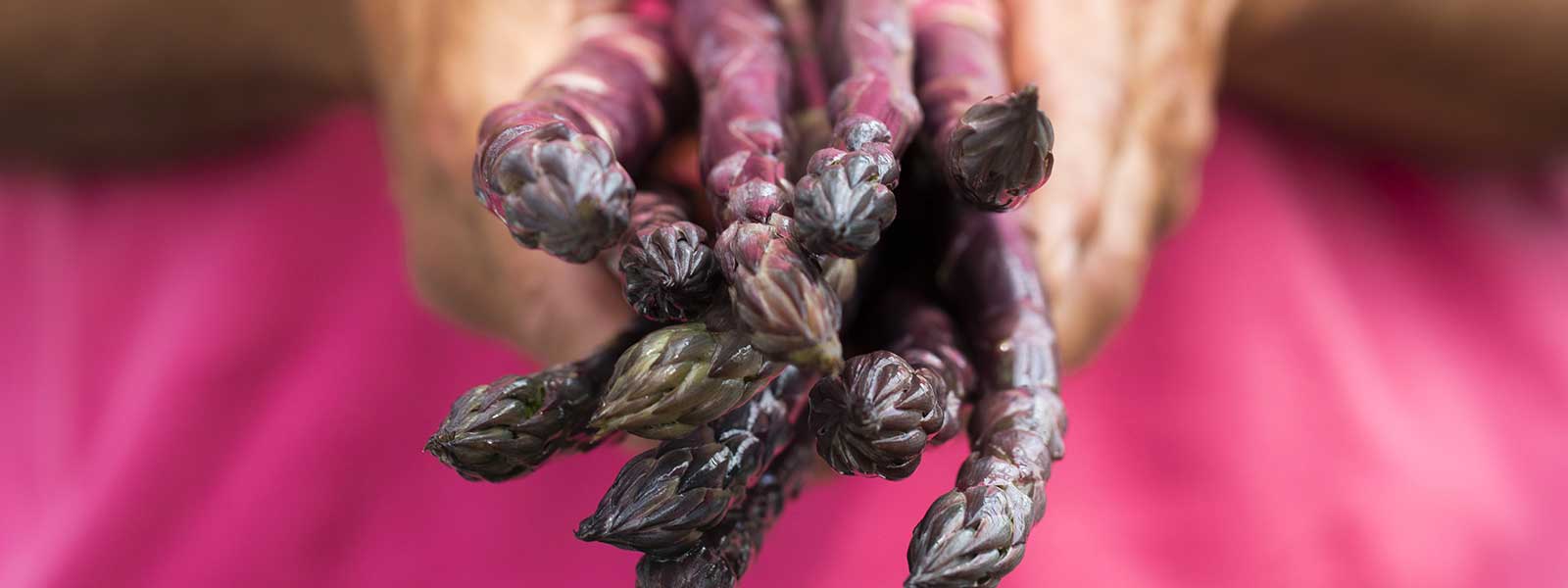The Violetto d’Albenga asparagus


The Violetto d’Albenga asparagus

The Violetto d’Albenga asparagus is easily recognisable by its vibrant purple colour, which gradually lightens towards the base. This distinctive hue is not the result of specific cultivation techniques but is rather linked to its genetic heritage. A scientific explanation underpins its purity: the Violetto has 40 chromosomes, compared to the typical 20 found in other asparagus varieties, preventing it from crossbreeding with other types. This genetic distinction ensures that it retains its quality and shape without compromise.
Insights
One of the names by which this vegetable is remembered is “Verdura dei Santi” (Vegetable of the Saints). This name derives from the timing of its harvest, which coincides with the celebrations of important saints. The harvesting begins on March 19, the feast day of Saint Joseph, and concludes with a grand festival on June 24, commemorating Saint John the Baptist, a date that historically aligns with the summer solstice, celebrated even in Roman times. The cultivation of the Violetto d'Albenga asparagus is still linked to these traditional rhythms that have shaped the lives of the farmers in Albenga for centuries.
Features
Attempts have been made to patent this asparagus in California, and several agronomists have endeavoured to cultivate it in New Zealand, Australia, and the United States, but with very limited success. In contrast, the alluvial soils of the Piana di Albenga are ideal for its growth, thanks to their deep sandy and silty layers and favourable microclimate. However, in Liguria, this variety, which was cultivated on over 300 hectares in the 1930s, has been nearly completely abandoned. The cultivation of Violetto asparagus is entirely manual, with harvesting occurring from mid-March to mid-June. Consequently, it reaches the market later, facing competition from other national and imported varieties.
How it's made
The most suitable preparations for this soft and buttery asparagus, which is not at all fibrous compared to other types, are those that enhance its delicacy. Avoid heavy sauces, prolonged cooking, refrigeration, or worse, freezing. Lightly boiled and dipped in extra virgin olive oil, it offers unique aromas and flavours, and it pairs well with very delicate foods: poached or steamed fish, roasted dishes, white meats, or refined sauces.
Experience a journey through ligurian flavours
- Recipes
- Itineraries
- Experiences



